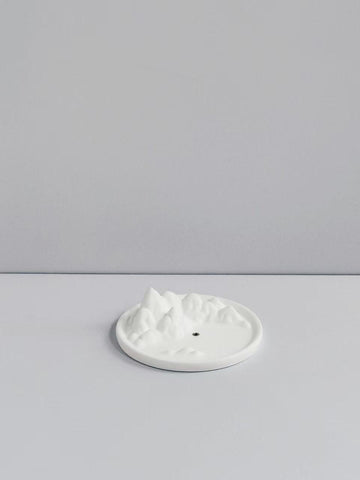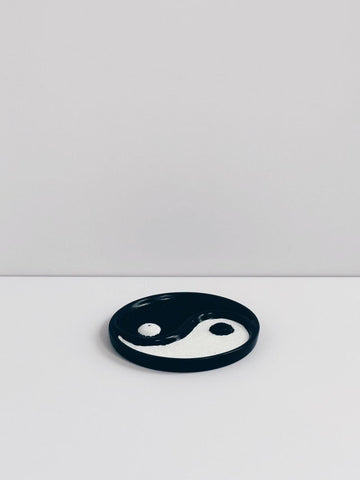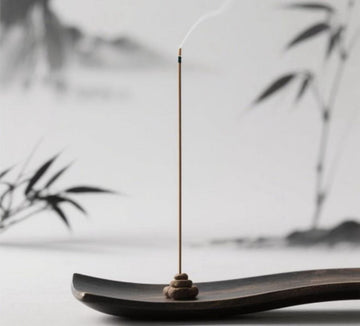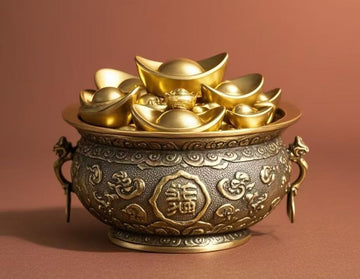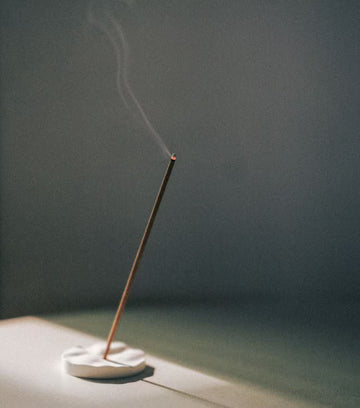Incense has long been cherished for its ability to purify spaces, elevate moods, and deepen spiritual practices. But even the most fragrant and finely crafted incense can cause problems—or lose its magic—if placed or stored incorrectly. This article will walk you through where not to put incense, including important storage tips, safety precautions, and a professional's take on preserving quality incense like Memoricall's handcrafted sticks.
Whether you’re a first-time user or a seasoned incense lover, understanding the do’s and don'ts of incense placement will protect your space, health, and investment.
Why Proper Placement Matters for Incense
Incense is more than a fragrance—it’s an alchemical fusion of earth, fire, air, and spirit. But because it involves open flames and delicate organic materials, misplacing incense can result in fire hazards, health risks, or loss of scent quality.
Additionally, premium incense—like natural, handmade stick incense—is highly sensitive to moisture, heat, air, and contamination. So, the first step in honoring your incense is knowing where not to put it.
1. Don’t Burn Incense Near Flammable Objects
This may sound obvious, but it’s the most overlooked rule.
Never place incense near paper towels, curtains, books, clothing, or wooden furniture that isn’t heat-resistant. These materials catch fire easily, especially if you’re using long-burning incense.
Even a small spark can lead to serious consequences.
🔥 Safe burning tip:
Always burn incense on a fire-safe holder placed on a non-flammable surface. Memoricall’s elegant incense holders are designed for both safety and aesthetic pleasure.
2. Avoid Placing Incense in Poorly Ventilated Spaces
Incense works best in areas with gentle airflow. Burning incense in a sealed room without windows or vents can lead to:
-
Excess smoke buildup
-
Headaches or breathing discomfort
-
Overpowering scent concentration
🚪 Ventilation tip:
Choose a well-ventilated room where the smoke can disperse naturally, allowing the fragrance to flow without stagnation. Slightly open a window or door to maintain air circulation.
3. Never Store Incense in Humid or Damp Environments
Moisture is the silent enemy of incense.
Even in a dry climate, incense—especially stick incense—absorbs moisture from the air due to its porous nature. Over time, this leads to:
-
Softening or bending of the sticks
-
Altered burning rate
-
Muted or spoiled fragrance
🧪 Mini test you can try:
Place a single stick of incense outside the storage tube for a few days. You’ll likely notice that it becomes soft and pliable—a clear sign of moisture absorption.
🛑 So, where should you not store incense?
-
Bathrooms
-
Kitchen shelves near the sink or stove
-
Laundry rooms
-
Balconies or windowsills exposed to rain or humidity
4. Don’t Store Incense with Strong-Smelling Items
Incense is highly absorbent—not just of moisture, but of surrounding odors. If stored next to:
-
Perfumes or essential oils
-
Spices or food products
-
Cleaning agents or scented candles
…it can quickly lose its original scent profile or develop strange mixtures of aromas.
🧴 Fragrance contamination tip:
Always store incense away from strong-smelling objects, preferably in a sealed container that isolates it from other volatile scents.
5. Avoid Frequent Opening of Storage Containers
If you’ve purchased a large quantity of incense, avoid opening the entire package repeatedly. Every time the container is opened, moisture and air are introduced, accelerating oxidation and aroma degradation.
📦 Pro tip:
Use a small incense tube or case to store daily-use sticks. Keep the rest sealed in the original package or a moisture-proof container. This method preserves freshness and scent for a longer time.
6. Don’t Expose Incense to Direct Sunlight or Extreme Heat
Direct sunlight and high temperatures will dry out essential oils in the incense, dulling the scent and affecting burn quality. Conversely, extreme cold may cause cracking or brittleness.
☀️ Storage environment rule:
Avoid placing incense near:
-
Window sills
-
Radiators or heaters
-
Inside cars
-
Attics or sunrooms
Instead, store incense in a cool, shaded, and dry area, ideally between 15°C to 25°C (59°F to 77°F).
7. Never Store Incense in Plastic Bags Long-Term
Plastic bags, especially unsealed ones, can trap moisture and promote mold growth. Worse, cheap plastic may release odors that taint your incense over time.
✔️ Best containers for storage:
-
Wooden boxes (preferably cedar or sandalwood-lined)
-
Glass tubes with cork seals
-
Bamboo or metal incense cylinders
These offer natural breathability while protecting against light and contaminants.
8. Don’t Let Incense Get Bent or Crushed
Stick incense is fragile. When stored improperly—especially vertically in tall, narrow containers or soft cases—sticks may bend, crack, or break.
➿ Best storage position:
Always store incense horizontally in a firm, padded box or tube. This helps maintain the stick’s integrity and even burning.
9. Don’t Use a Makeshift Incense Holder
Balancing incense in a teacup, bottle cap, or plant pot may seem clever, but these unstable setups increase the risk of tip-over, burns, or uneven burning.
For clean, safe use, invest in a dedicated holder with proper support and ash collection features.
🕯️ Discover Memoricall’s handcrafted incense holders designed for maximum stability and minimal mess.
10. What If Your Incense Gets Damp?
If your incense becomes soft, bent, or squishy, it has likely absorbed too much moisture. Don’t panic—here’s how to rescue it.
🧼 Quick drying method:
-
Lay incense sticks flat on a tray.
-
Place the tray in a room with air conditioning or mild dehumidification.
-
Wait 3–6 hours until the sticks regain hardness.
-
Re-store them in a sealed container immediately.
⚠️ Fixing bent incense:
If the stick is bent but not broken, gently straighten it while it’s still flexible. Then air-dry in a shaded area to retain the corrected shape.
Fortunately, slightly damp incense can still be burned safely after proper drying and usually won't affect the aroma.
Summary: Where Not to Put Incense?
| Don’t Do This | Why It’s Harmful |
|---|---|
| Burn incense near flammable items | Risk of fire |
| Use incense in unventilated spaces | Overexposure to smoke |
| Store incense in humid/damp areas | Causes softening, loss of fragrance |
| Keep incense near strong-smelling items | Leads to scent contamination |
| Frequently open large storage packs | Introduces moisture and air |
| Store incense in sunlight or heat | Degrades oils and aroma |
| Use plastic bags long-term | Promotes mold and odor retention |
| Store incense vertically or loosely | Causes bending and breakage |
| Use unsafe DIY holders | Increases fire and tipping risk |
Final Thoughts: Treat Your Incense Like Fine Wine
The way you handle incense—before, during, and after burning—directly influences your sensory experience. Just like tea, wine, or perfume, incense deserves careful preservation and respectful use.
Memoricall's handcrafted incense is designed to age gracefully when properly stored, developing a smoother, deeper aroma over time. With the right care, your incense won’t just stay fresh—it will become more refined.
🌿 Ready to elevate your space safely? Explore our incense holders collection for elegant, fire-safe solutions that blend form with function.



